This blog post contains affiliate links. (These can be spotted by the text [affiliate link] or an * placed after the link.) I use these links because the small commission I make allows me to keep creating intuitive, practical legal (and biz) resources. Plus it never changes the price you pay.

Legally, how important is it to have a business plan? What are the pros and cons of developing a traditional business plan for a small/just-starting business? I feel like I need one, but keep putting it off.
Joan Goodspeed, Break + Remake
Do creatives need to write a business plan?
A business plan is critical for every single creative business.
- Crafters need a business plan
- Artists need a business plan
- Etsy sellers need a business plan
- Workshop teachers need a business plan
- Photographers need a business plan

But…you don’t need a formal business plan. The reason you can skip the traditional format is that you aren’t getting a loan or finding investors.
Even though you don’t need a formal business plan, it doesn’t mean you don’t need one. Because a business plan forces you to answer questions. And helps you come up with a first draft of:
- who you serve
- what products/services will help them solve their problems
- how will they find you
- what makes you unique
- what revenue streams you’ll use
- what it’ll cost to deliver
- what do you want your business (and life) to look like
- how do you define success
- how you’ll measure progress
- who you’ll collaborate with
And since it doesn’t need to be formal, it doesn’t have to match any formatting.
You can (and should) create a plan in the way that works for you.
Your plan can be:
- text-based like the SBA template or the Business Model Canvas (or grab my version of the Business Model Canvas tailored to creative businesses inside the Legal Roadmap book)
- visual like a mood board (like my friend Jenn Lee teaches in her book The Right-Brain Business Plan*) or doodles in your Bullet Journal
Think of your business plan is like the underpainting of a canvas
It’s important to remember that your business plan isn’t set in stone.
It’s almost impossible for a new, young business to predict what it’s going to look like five years in the future. And so what you put in your business plan will inevitably change and evolve over time. And that’s good.
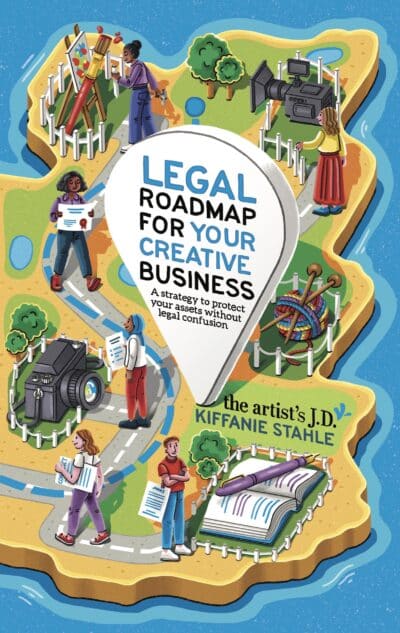
Want help getting all your legal ducks in a row?
Feeling overwhelmed by the legal side of your business? You’re not alone. Then the Legal Roadmap book is your go-to guide.
Legal Roadmap for Your Creative Business breaks down the essentials into bite-sized, actionable steps that fit into your already busy life.
Designed for creative minds, this book helps you prioritize what really matters—without getting lost in legal jargon.
Whether you’ve been running your creative business on the side or you’re finally ready to take it to the next level, this roadmap is your step-by-step guide to protecting your assets without the headache.
Start adding ease to the legalese today!
(If you use the above Amazon affiliate link, I’ll make a small commission, but it doesn’t change the price you pay.)
How to write a business plan for your creative business
The business plan we are going to create is designed for those of you who are running a small creative business, like my friend Joan. She is exactly why I created the Creative Business Model Canvas.
And so I created the Creative Business Model Canvas, a one-sheet business plan for creatives, designed to force you to answer ten important questions. So you can get the benefits of a business plan while skipping the traditional business plan template. (Because you only need that if you’re going out and getting investors.)
Over the last seven years, I’ve worked with thousands of creative businesses, both as an attorney and a legal educator.
Some of those businesses have become really successful. Some of those businesses have stayed stagnant. And others, unfortunately, don’t exist anymore.
After watching all of these businesses, I’ve noticed a common theme with those that succeed.
They have a strong business foundation in place, so they can seize big breaks when they happen.
And one of those foundation pieces is having a business plan for your creative business.
What goes in a business plan for creatives?
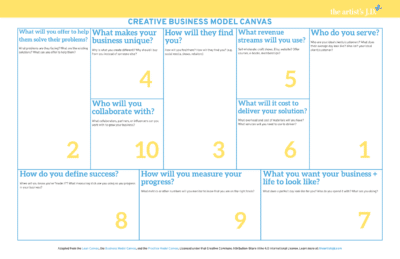
In the Creative Business Model Canvas, you are going to answer 10 questions.
I want you to create a plan that is not super formal and stuffy, but that you can actually use to guide your business decisions.
And to help you build that strong foundation.
So that when your big break happens you can leverage it and grow your business. Rather than scrambling to get things in place to take advantage of it.
And creating a really simple business plan, like this one, will help you build your foundation.
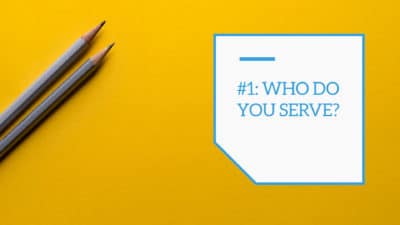
Question #1: Who is your creative business serving?
Who are you serving? Who are your ideal clients and customers? What does his/her average day look like? And more importantly, who isn’t your ideal customer?
If you are a surface pattern designer, your client could be the sewer or it could be the fabric company.
- Is your client the person buying your fabric off Spoonflower?
- Is your client someone who makes quilts?
- Is your client the company that licenses your designs to put on fabric?
And depending on your answer, you’ll go about targeting and serving these clients very differently.
If you make jewelry, are you serving an urban woman that’s into high fashion? Or a suburban mom that lives in yoga pants?
You want to not only identify who you’re serving but draw a line in the sand. And say these are the people I’m not serving.
Because the more you can identify your ideal client/customer and speak to them, the better chance you’ll have at making the sale.
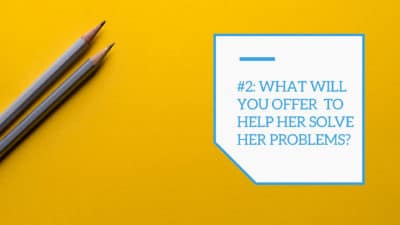
Question #2: What will you offer to help them solve their problems?
Most people say that Question #2 is really tricky for artists and those who offer luxury products. But most of us are offering a luxury product. Because we aren’t selling the cheapest, most basic solution on the market to provide food, water, and shelter. (Seth Godin explains this way better in his book, This is Marketing*.)
So another way to phrase this question is,
What story am I helping them tell about themselves?
Before I hit the road in my RV full-time, my most common accessory was a piece by Zelma Rose. And part of the reason that I wore it is the story that Lisa’s jewelry helps me tell about myself.
I want people to perceive me as being an artsy, cool, laid-back lawyer. And even though I don’t wear much jewelry, I’ve got a statement piece on that connects and sparks a conversation with creatives.
Her jewelry helps me make connections with creative people. I can always spot them in a room based on if they notice what I’m wearing and the questions they ask about it.
It allows me to tell a story about who I am and connect with creative people.
She’s selling a very high-end luxury jewelry product that I gladly fork over money for.
And the only reason I don’t own every piece she creates is that my pocketbook can’t afford it. (And sadly, because she’s moved on to other projects and closed Zelma Rose!)
And so regardless of what you create, I’d like you to dig into this question. And think about the story that you are helping your customers tell to themselves and those they interact with.
So question number two requires understanding what you are going to offer to help them solve their problems.
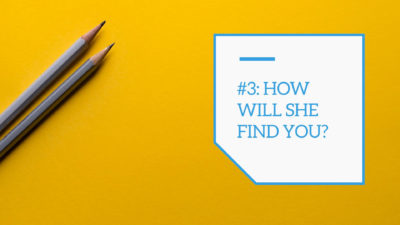 Question #3: How will they find you?
Question #3: How will they find you?
Next, you need to figure out how they are going to find you. And where they hang out.
If you deal with local businesses, they might not be hanging out online. Maybe the best place to find them is by going down to the local coffee shop and working there. And making conversation, connecting with people, and learning what they need.
Maybe it’s walking down to a brick-and-mortar store and talking face-to-face with shop owners.
Maybe it is online. But even online, different platforms have different demographics.
For many of us, Twitter is a terrible place. But if you are targeting journalists or politicians, it’s still a great tool.
So you need to discover, what platforms you will use to connect with your ideal clients and customers. And you need to discover what places will give you the biggest bang for your buck. And then spend your time there.
Early on, it’s going to be hard to know if Instagram, Pinterest, Facebook, or something else is going to give you the best return on your time.
This means you make your best guess and run an experiment.
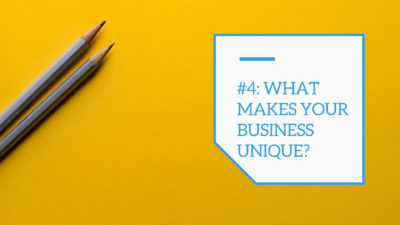 Question #4: What makes your business unique?
Question #4: What makes your business unique?
This question is one that’s easy to talk about as creatives. And that’s what makes you, your art, your products, and your services different.
- What makes your style?
- What techniques do you use?
- What feelings do you evoke?
- Why is what you create different from those creating a similar thing?
For example, there are several attorneys talking to creative business owners about the legal side of running a creative business.
So what makes me different from those other attorneys?
I could say:
- I talk about the law in a conversational manner
- I use practical real-world examples
- I give you action items
- I try to make a notoriously unclear topic easy
So for this question spell out what makes your business unique.
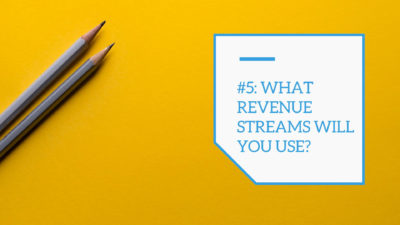 Question #5: What revenue streams will you use?
Question #5: What revenue streams will you use?
This question is fairly straightforward and just asks you to narrow down what revenue streams you will use.
- For physical products, this could be commissions, wholesale, craft shows, and your website.
- For information products, this could be e-books, courses, and a membership community.
- For art licensing, you might sell some designs on products yourself and other designs you sell to other brands.
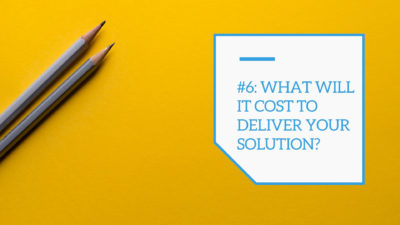 Question #6: What will it cost to deliver your solution?
Question #6: What will it cost to deliver your solution?
This question a lot of people skip over. And that’s figuring out what expenses you’ll have when delivering your product or service to your customer.
You might have overhead expenses for
- credit card processing (Square, Etsy, Shopify, PayPal)
- web hosting
- email marketing (MailChimp, Convertkit)
- social media scheduling (Tailwind, Later, Planoly)
Then if you’ve got a physical product, you have the costs that go into the materials required to make (and ship) your product.
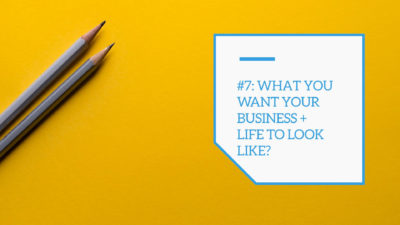 Question #7: What you want your business + life to look like?
Question #7: What you want your business + life to look like?
The next three questions aren’t usually covered in a traditional business plan, but I think they are critical. Which is why I included them in our business plan for creatives.
When you wake up in the morning what does a perfect day look like?
Do you dream of traveling the world? And waking up in a new city every month. Where you can explore in the morning and evening while working in between?
Do you want to be able to drop your kids off at school every morning? And then work while they are at school. And be able to pick them up and spend the afternoon with them?
One of my dreams was for more travel, outdoor time, and flexibility, which is why I now enjoy living in my RV full-time!
In this question, I want you to think about what your dream life looks like and what steps you’ll need to take to get there.
Because when you make business decisions, you need to understand if this is helping you get closer to or farther away from your dream life.
And if so, which needs to change, the decision or what you are working towards?
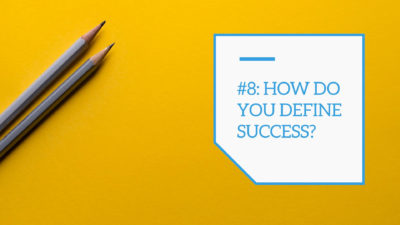 Question #8: How do you define success?
Question #8: How do you define success?
Another question that isn’t in a traditional business plan, is “How do you define success? And what does it look like when you’ve “made” it?”
You could be working towards a specific dollar amount.
Or working towards being able to travel more. Maybe for you, that’s having enough money in the bank to buy a last-minute ticket to Paris. And to be able to travel there for two weeks and know that you’ve got your business set-up for that. So that you can work remotely and your business will continue to grow.
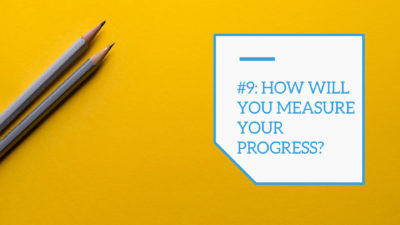 Question #9: How will you measure your progress?
Question #9: How will you measure your progress?
And that’s followed up by question nine, what will you use to know if you are getting closer to that goal?
This could be
- sales numbers
- revenue
- publication mentions
- website conversion rate
- how many people on your email list purchase from you
When it comes to this question it can be easy to get sucked into vanity metrics. Things like follower count and page views.
And those metrics are fine if you know that they help you get closer to your goal.
For example, if you know that one out of every five Instagram followers buys from you. Then increasing your Instagram following will increase your sales.
But without that connection, increasing your Instagram following isn’t doing anything for your business.
So when you are answering this question make sure that it’s something directly tied to reaching your version of success.
 Question #10: Who will you collaborate with?
Question #10: Who will you collaborate with?
The final question you are going to answer deals with who you will collaborate or partner with.
Who can you do a joint promotion with that will grow both of your businesses?
For example, if you are a jewelry designer you could partner with a bag designer or a clothing company. To help all of your ideal clients, easily know what works well together and create an entire outfit.
How often should a business plan be reviewed?
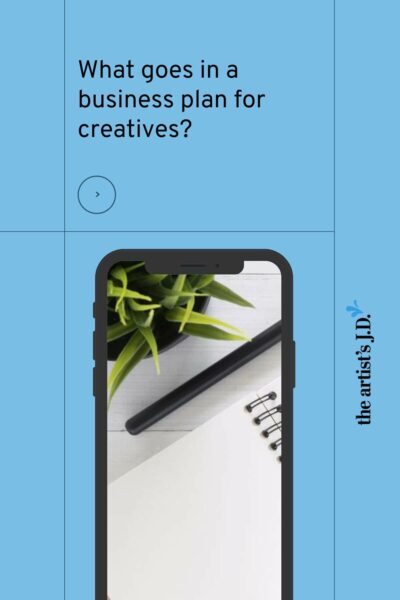
What you put on this Creative Business Model Canvas (or whatever plan you make) isn’t carved in stone.
You are going to answer each of these questions based on the information you have now. You are going to make guesses and assumptions. Then you’ll run experiments. And see how they pan out.
And collect data along the way (don’t just go with your gut instinct).
Then look at your data, and update your guesses, assumptions, and plans. And then try a new experiment.
Business plans aren’t something that you do once and forget.
No one is going to know perfectly what their business will look like in a year, even if you’ve been in business for a while. (And this is why I *at minimum* review my business plan every year.)
What you do is start moving toward what you’ve written down in your plan. And if you end up hating it, if you end up realizing it’s taking you in the wrong direction, then you get to change.
And that’s all you are going to be doing here. You’re going to come up with your best guess if it doesn’t work you get to cross it off. Start over. Tweak, move on.
Your action item in this post is to create a simple business plan that you will use to make decisions.
Because projects are a waste of time, money, energy, and effort if they aren’t getting you toward your goals.
This also means your business plan is a permission slip. It’s a permission slip to let go of some of those “shoulds” that you’ve been told you need to do in your business.
Because if those “shoulds” don’t help you get to where you want to go, then it’s not a should. It is a complete waste of time and you have permission to release it and not think about it anymore.
Your action item
- Create a business plan (hopefully using the Creative Business Model Canvas questions above!)
Want help getting all your legal ducks in a row?

Wish you had a straightforward strategy to protect your ass(ets) without legal confusion? Then the Legal Roadmap book is your go-to guide.
Inside this book, you’ll find three Maps that will help you build a business you love, built on a strong legal foundation. And you’ll get my guidance step-by-step to execute each of the action items contained in the Maps.
(And the outcome of Map #1 is writing the kind of business plan we talk about above!)

Hi! I’m Kiff! I’m your friendly legal eagle (and licensed attorney).
My goal is to add ease to the legalese. And because I think basic legal resources should be available to every creative, I create a lot of free content.
If I’ve created something that has helped inject a little ease into your creative business and you would like to say “thank you”, you can make a contribution here.
If you’d like to hear more from me, I’d love to pop into your inbox every Friday morning to share additional ways to cut through the red tape and inject a little ease.
Get tips from your friendly legal eagle in your inbox…
Your privacy is important to us. Learn how we protect it here.
Do you still have questions?
No shame in that! One of the perks of membership in the artist’s Courtyard is a 24/7 private online community to ask your questions and get my answer (and insights from other creatives). Already a member? Ask your question! Not a member yet? Join us inside the artist’s Courtyard for $45/month!

